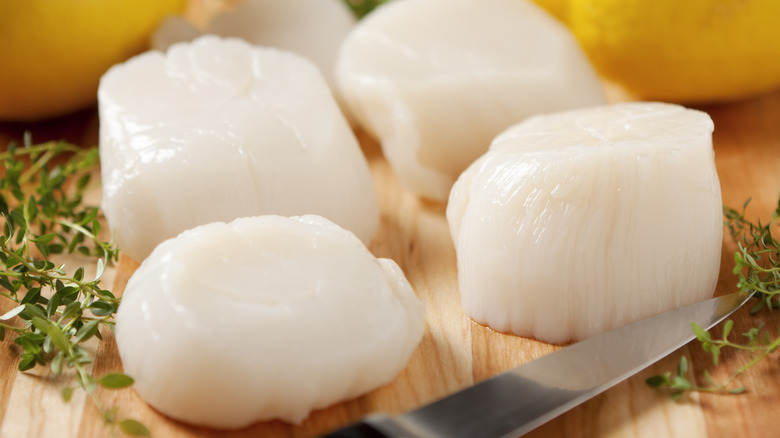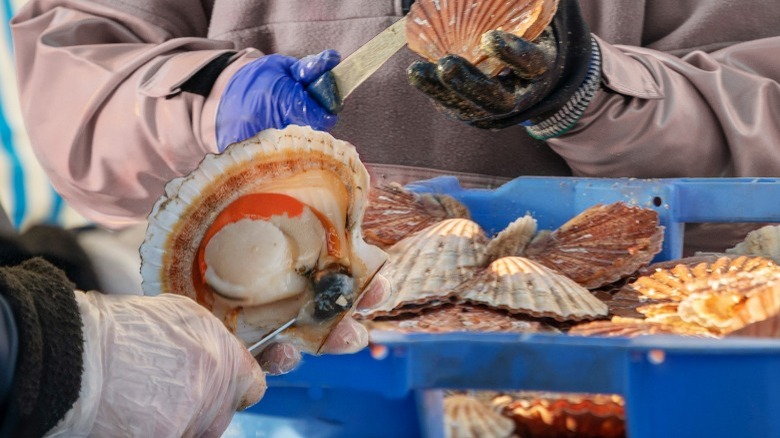What Size Designations Mean When Buying Fresh Scallops
Known for their mild flavor and soft, creamy texture, scallops are one of the ocean's most decadent offerings. Whether lightly seared to buttery perfection as a main course or delicately adding its salty sweetness to the melange that is ceviche, scallops rarely go unnoticed or unappreciated. But knowing which ones to buy can be a headache if you don't understand the size designations purveyors use to separate the minuscule from the mighty. Simply learning the lingo will empower you to make a more informed decision the next time you purchase these briny bivalves for, perhaps, some bacon-baked scrumptiousness.
In a nutshell (or scallop shell in this case), it all comes down to size versus weight. Specifications such as 10/20 or 20/30 are giving you an estimated range of how many scallops of that size equal one pound. So, for example, in the former case, it would take 10 scallops to weigh a single pound. Basically, the higher the number, the smaller the scallop, and vice versa. But what about those mysterious U's you often see?
Some scallop size designations include a "U" before the number, such as U/10. The U simply stands for "under." So, in this case, less than ten of these larger-sized scallops would make a pound.
Bay scallops versus sea scallops: Which are bigger?
In general, scallops fall into the categories of bay scallops and sea scallops. Bay scallops are found closer to the shore and are typically smaller, with a sweeter taste. Some are so small it can take as many as a hundred to equal a single pound, though 20/30 is what you'll commonly see. The very small ones are great for stews and ceviche. Sea scallops are gathered farther away from land and are typically bigger, with U/8s being the largest. Though not quite as sweet, sea scallops are ideal for a simple sear-and-serve.
Most scallops are collected by indiscriminately dredging the ocean floor. But you may also see some labeled as diver scallops, and as the name implies, these are harvested by shallow-water divers. Though not a size designation in itself, usually divers choose the largest scallops, leaving the smaller ones behind to mature. Because of this practice, diver scallops are thought of as more ecologically friendly and sustainable. They are, however, harder to find and, because of their size and labor-intensive harvesting method, quite expensive. Because of this, some purveyors have been known to falsely claim they are selling diver scallops when they're just regular sea scallops.
Keeping these things in mind, along with other important factors when buying scallops, will make you a seafood shopping pro indeed.

